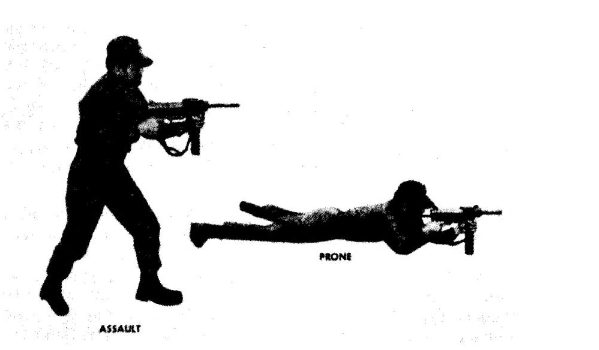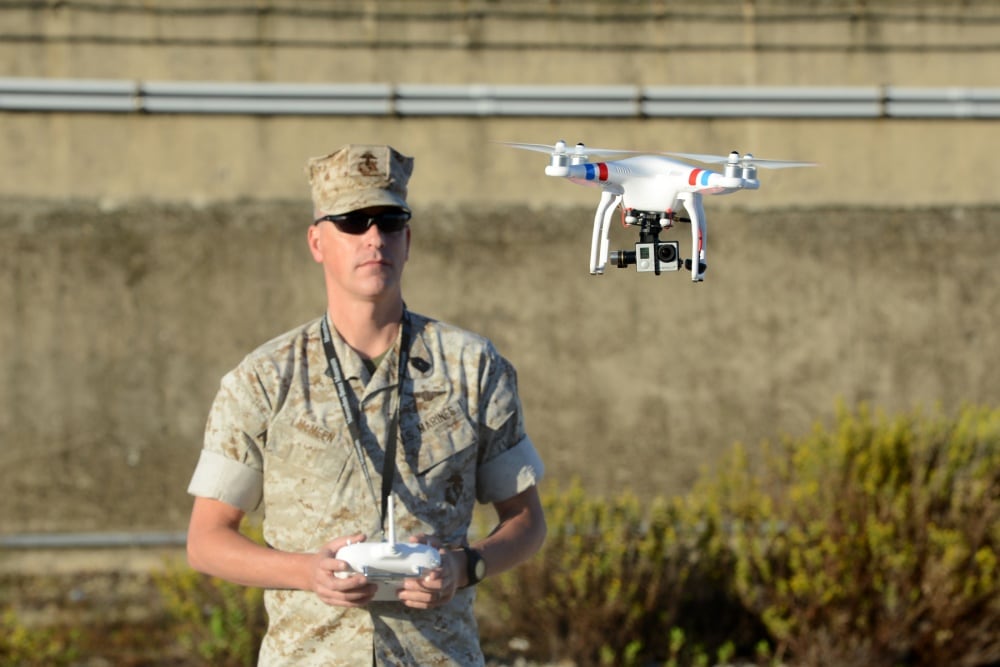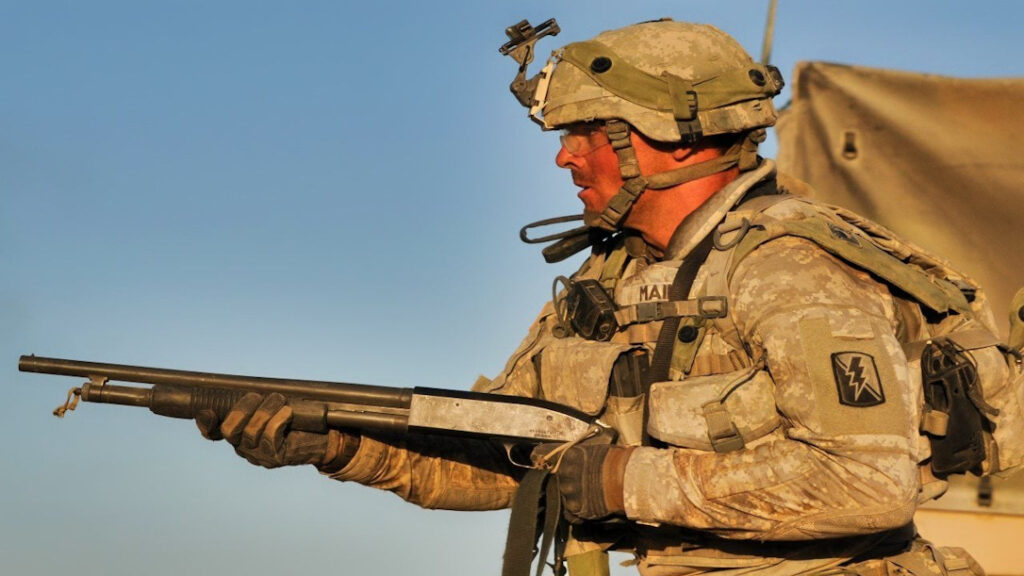We’ve all probably come across something in firearms media showing or advising to tuck your gun’s stock under the arm and point it forward. This is often called the underarm assault position for who knows why. It was a fairly common position used from World War 1 up into the 1980s, at least. I’ve seen it in WW1/WW2 era military manuals up into Massad Ayoob’s Stressfire 2.
It’s been around, and I always wondered why? In our era, we don’t see it very often, if at all, and throughout my Marine Corps career until now, no one has taught me the assault position, and therefore no one ever taught me why. I had my own hunches, but hunches aren’t enough, so I went exploring, finding explanations and reasoning why the reasons behind the so-called assault position.
Origins of the Underarm Assault Position
The assault position comes from a tactic known as walking fire or marching fire. It was first used by the Prussians during the Austro-Prussian War. French general and keeper of a very long name, Jacques Antoine Hippolyte, Comte de Guibert, originally named the technique walking fire and felt it was ill-advised. The Prussians, with their Dreyse needle guns, made good use of it, notably at the Battle of Koniggratz.
Advertisement — Continue Reading Below

From there, it evolved and became tactics used in World War 1 with the French and their Chauchat automatic rifle. Later the Americans adopted it with their M1918 BARs. The idea was simple. An infantry assault moved together, with automatic weapons suppressing the enemy until the infantry reached a point they could charge. The automatic riflemen would tuck the weapon under their armpits and fire nearly from the hip.
This tactic fell out of favor when proper fire and maneuver combat entered the military mindset. The assault position remained en vogue for some time after marching fire gave way.
Advertisement — Continue Reading Below
Getting Close
The Thompson SMG and M3 Grease gun also employed the assault position, but not necessarily for marching fire. FM 23-41 the M3 and M3A1 Field manual states that:
This position, usually called the hip position or chest position, is used for close-in fighting. When this position is used, there is less tendency of the muzzle to climb. The sights are not used to aim the weapon; the firer simply points the weapon toward the target and commences firing. The soldier must have a great deal of practice before he can do accurate shooting. To assume this position, press the stock against the side of the hip with the right arm, or place the stock under the armpit and press it against the body. The body should be in a crouched position, and the firer should walk on the balls of his feet so that he can quickly shift his body to fire at targets to his side.
That’s a fairly apt explanation of why the position was used with SMGs in World War 2
Advertisement — Continue Reading Below

A Ready Position
While walking fire went away, the assault position often served as a ready position, especially in an era where slings went over shoulders and not across bodies. You could carry your M3, your Thomspon, your M1 Garand, or BAR at a quasi-ready position comfortably by tucking it under the arm. This helped support the weight of the weapon. It also made it quick and easy to shoulder when working in a less-than-permissive environment.
Retention
In the modern era, this same position was used for extremely close quarters for retention purposes. The LAPD SWAT MP5 qual calls it the close retention positions. The justification is simple. The weapon is closer, so harder to take. It’s also pinned under the arm, again making it harder to take. The officer using the positions can still orient the gun at the target while using their offhand to secure a suspect or fend them off.
Advertisement — Continue Reading Below

You can shoot from this position, but with the modern ideals of accountability, it’s only used in extremely close quarters. For example, the LAPD MP5 qual only uses the position when shooting at three yards.
End of an Era
My carry-a-gun-for-a-living training never included this position, and I wonder if modern slings and weaponry have made it obsolete. Maybe it’s still being taught, or maybe our tactics have evolved to get rid of it. Equipment and tactics are in constant flux. I always find it interesting to track down the origins of certain gear and tactics. This help me understand the why behind their reasoning, and it was fascinating to research the underarm assault position. Hopefully, we all walked away with a better understanding of this old-school tactic.
Advertisement — Continue Reading Below















